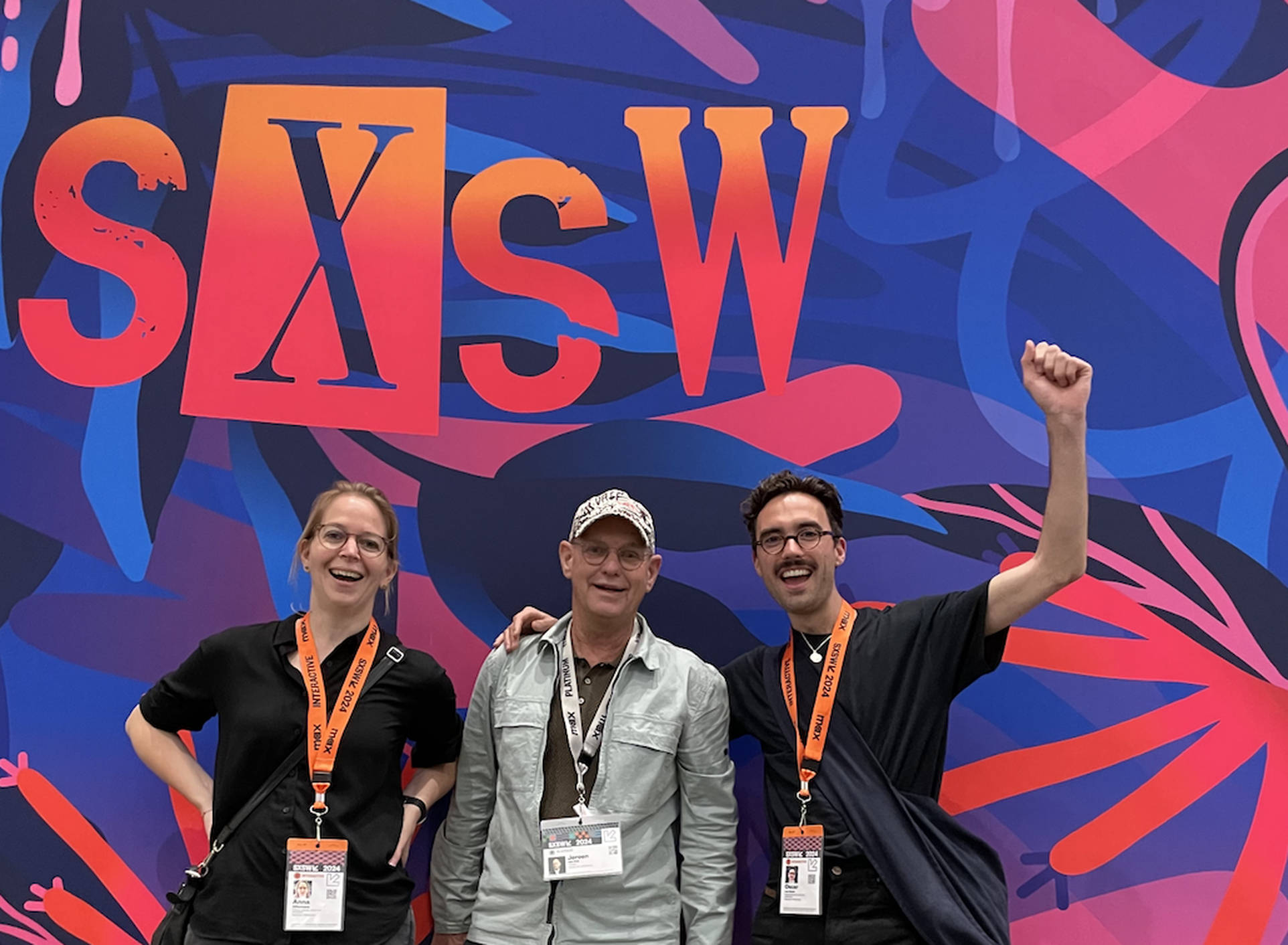Our SXSW 2024 highlights
South by Southwest. The leading festival for music, film and interactive media. SXSW has been held annually in Austin, Texas, since 1987. In fact, in the field of music, it is the biggest festival of all. In other words: a big deal. 400,000 visitors from all over the world. This year, Jeroen, Anna and Oscar from Fabrique got to travel to the festival. Read their highlights here.
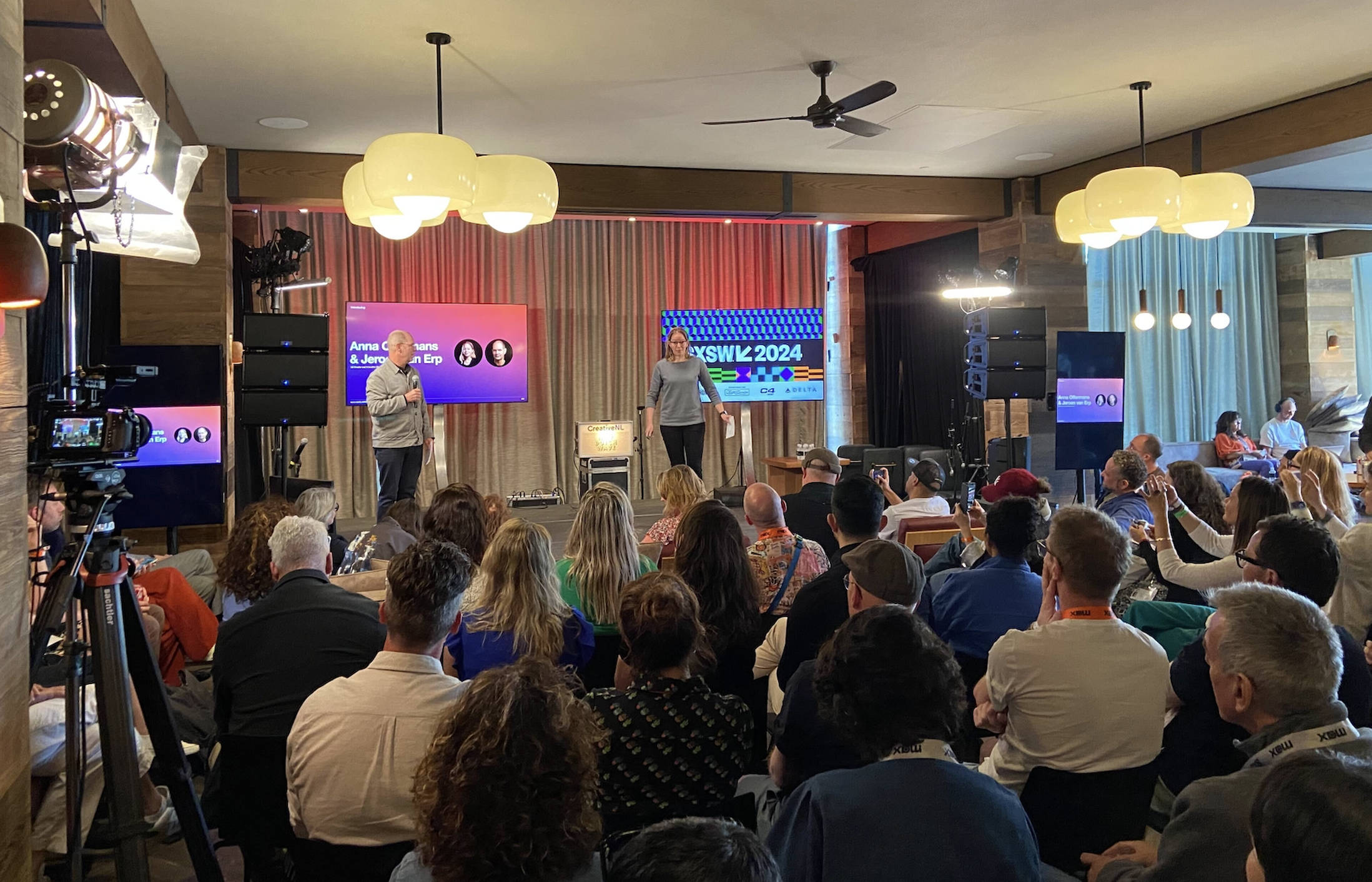
Songs for a Passerby - Oscar
The thing that has stayed with me the most is ‘Songs for a Passerby’, a virtual reality opera directed by Dutch artist Celine Daemen. In a large empty room with nothing more than a shaggy carpet and a spotlight, I was given a VR set to put on and was told only to follow the light. Accompanied by a dog, I walked through a dark, somewhat dystopian environment, guided subtly by the light. I could walk around freely and did not feel constrained by physical or technical limitations; I really liked that. Thanks in part to the absence of visible UI elements, this was the first time I truly forgot my surroundings and felt totally part of this alternate world. It was an interesting and at times scary experience, where you were confronted with bizarre situations, interesting perspectives, and ultimately with yourself. Highly recommended!
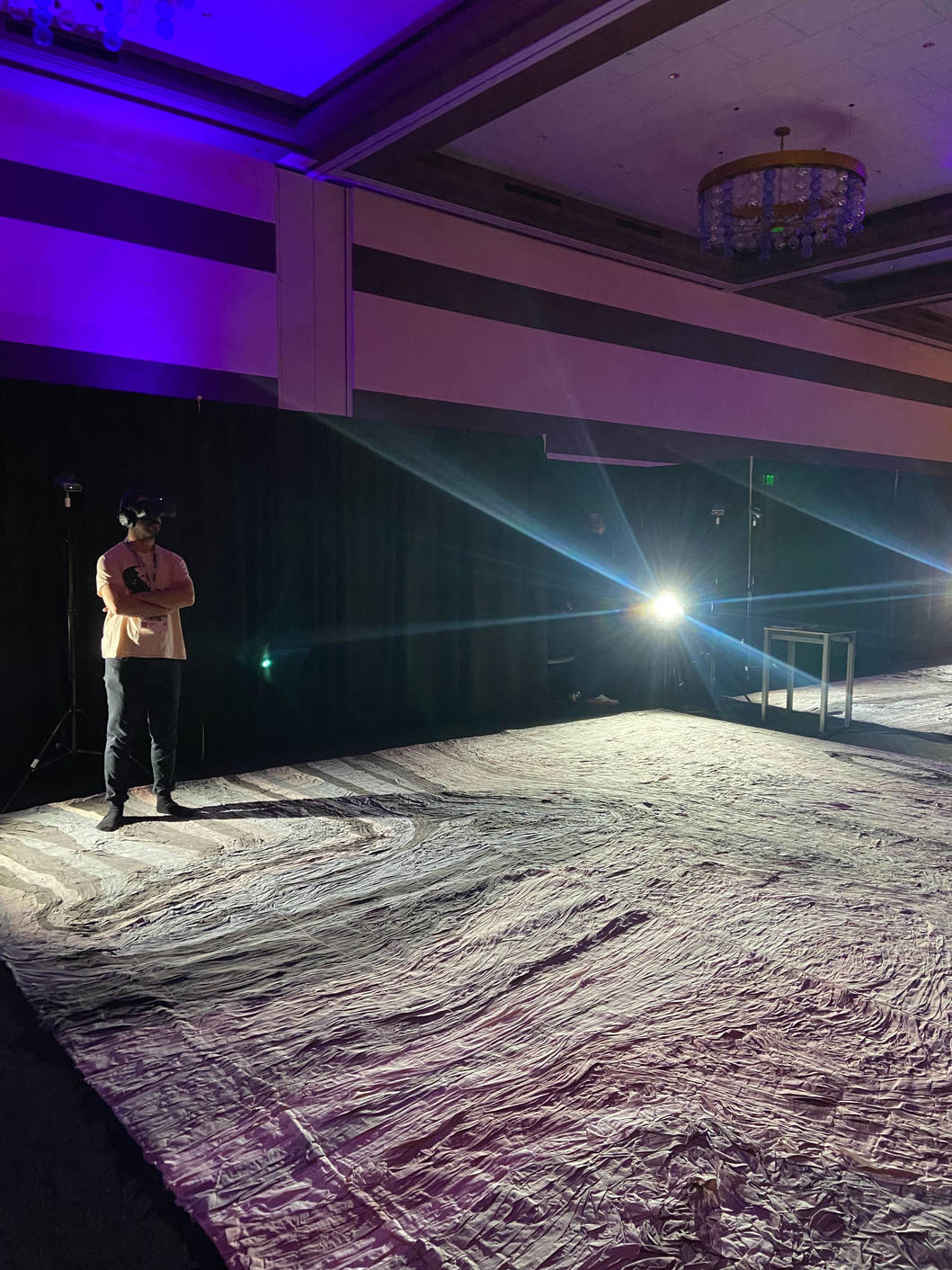
Crowd management - Oscar
The way they handle queues, crowds and signage in Austin is quite remarkable. Austin seems to have really mastered crowd management, and for good reason. The relatively small city suddenly has to accommodate, move and entertain an additional 400,000 people. At the larger sessions in the larger venues, there are additional large auditoriums to house the next session’s audience. The waiting lines you see on the street are also well organized so that no one is in the way, no one is on the street, and that no one is cutting in line. It feels a bit strict and rigid at times, but also ensures that everything runs smoothly.
Save the designers! - Anna
During SXSW, downtown Austin almost turns into a festival location; streets are closed off, food trucks gather around the convention buildings, bike taxis with upbeat music take people from one venue to another, there’s a self-driving delivery robot, and Tesla has nonchalantly parked its Cybertruck “built for any planet" on the side of the road. Striking in all this was a group of demonstrators who occasionally showed up with the message "Save the designers!"; an appeal to continue to value the designer's craft and not let AI make the designer obsolete. Several sessions included a response to this: "As a designer you will not be replaced by AI. You will be replaced by a designer who uses AI."
Immersive experiences - Oscar
This year's festival is (unofficially) dedicated to immersive experiences. Many different definitions and perspectives exist and have been discussed, including by my colleagues Jeroen and Anna, who dissected the term in their talk. The acronym IX, as in the occupation of IX-er, was new to me, but at SXSW it is considered normal and used all the time. The new, immersive canvas is different from what we are used to on our 2D screens, and requires different terminology in order to be able to discuss it properly. The possibilities seem endless, if sometimes a bit opportunistic. The visual spectacle is certainly exciting and inspiring!
Of course: AI - Oscar
The program was, of course, rich in AI content, and even in sessions not specifically labeled "AI", its relevance was still discussed. Something that struck me was the urgency to continue to value AI in the right context. AI has the potential to be a holistic entity that adapts to the context of what it is being asked to do. But increasingly, AI is proving to be ineffective because it is not tailored to the target audience or geographic area. For example, a panel with a weather expert indicated that we should be careful about rolling out AI in areas other than where it was trained. In these areas, context factors are at play that the AI is not familiar with, meaning it will not be able to make correct predictions. The same thing came up in a panel on content moderation, citing the example where an AI proved ineffective because it could not grasp the cultural nuance. For example, in Uganda, calling someone a Coca Cola bottle is hugely offensive because of racial and colonial undertones. A Western AI is unable to filter these hateful messages and is therefore inaccurate.
Want to know what was said?
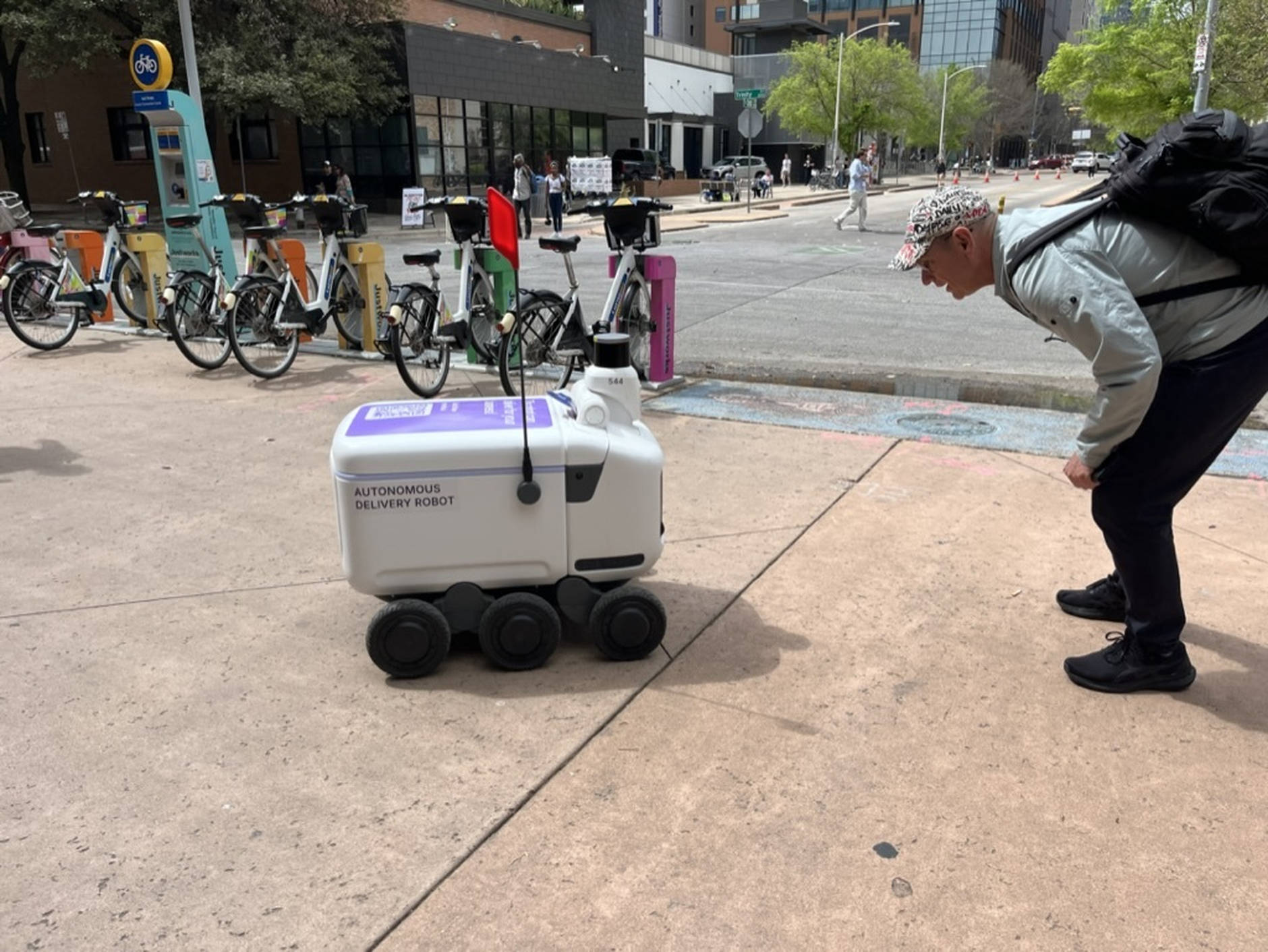
Government and Big Tech - Anna
I saw an interview with Margarethe Vestager, the Denmark-based Euro Commissioner for Competition in the European Commission. What an inspiring woman! Among other things, she talked about how the EU is leading the way in regulating digital services in Europe, with the introduction of legislation such as the Digital Services Act and the Artificial Intelligence Act. The latter has been approved by the European Union this week. It lays down rules for the development, marketing and use of Artificial Intelligence.
One of Vestager’s examples was shocking to me; it had to do with the regulations that Facebook faces from the European Union. There are stricter rules that help prevent online child abuse. Facebook adheres to the regulations it must follow in Europe, but outside of Europe it is currently playing dumb, and is not making the adjustments that are needed.
Listen back to the entire session?
Featured Session: Technology, Leadership, Geopolitics and the Future
Inheriting old problems - Oscar
A major limitation of AI is that it works with the data that it is fed. If the AI does not have the right data to learn from, it will learn with a defect. A panel discussion initiated by Alexandra van Huffelen (Dutch Minister for Digitization) on ethical AI, included a conversation on how we can inherit old problems if we use outdated datasets, with the benefits scandal that rocked the Netherlands a few years ago as the main example. Regulating AI is important. But AI is developing rapidly, much more quickly than laws and regulations. That is why it is also up to companies to actively engage in the responsible development of AI.
A critical look at designers’ tools and methods was a constant theme at SXSW. One of the methods scrutinized was design thinking. If we look closely, we see that outdated ideas and biases have become entrenched in the methods and tools we use every day. The skewed power relationship between designer and target group in the design process was also touched upon, and ways in which we can genuinely involve the target group in the design process were discussed. Not just as input, but as a decision maker and stakeholder with a decisive role.
Want to know more about how we inherit old problems?
What The World Needs Is Ethical AI
How Design Thinking Protects White Supremacy
Figma CEO on designing with AI - Oscar
SXSW, of course, is all about the big topics. Sometimes the subjects were so profound that I couldn't relate to them. In a live recording of podcast series Decoder, Nilay Patel (The Verge) talked to Figma CEO Dylan Field. This conversation also touched on those big themes, but all within a very familiar framework: Figma. In this way, it became concrete for me and I was able to imagine what the future will look like. For example, Field sees AI as a way to lower the threshold for novice designers and a way to raise the ceiling for experts. He sees it as a tool for the designer, not a substitute (a common sentiment among AI opportunists). Another striking comment was that he expects we will see a backlash on the use of design systems. Figma has bet big on supporting design systems and is a forerunner in this area. He sees a desire for more flexible systems that allow for more exploration and freedom.
You can listen to the entire podcast here:
Why Figma CEO Dylan Field is optimistic about AI and the future of design
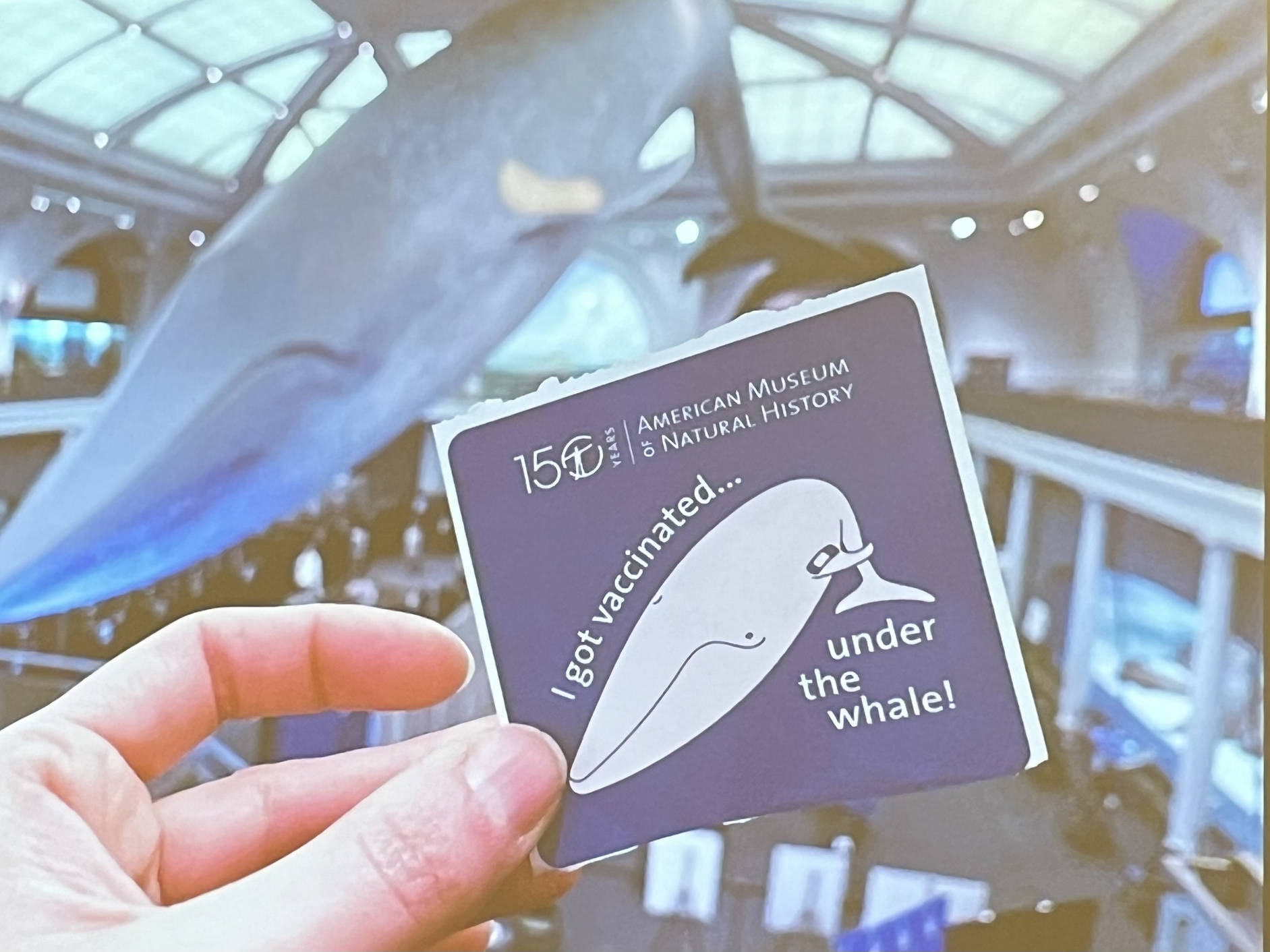
The physical environment gets discussed, too - Anna
I was interested to see that public space is also on the agenda at SXSW. The director of the American Museum of Natural History in New York and the architect who recently designed an annex for it, Jeanne Gang, shared the stage and talked about how they aim to make the museum as accessible as possible. One way they did this was by hosting community activities in the museum, such as setting up a polling station during elections and facilitating vaccination during the Covid pandemic. The building was also literally made more accessible; the museum's entrance was moved from the second to the first floor.
The city as a place for biodiversity - Anna
The architect Jeanne Gang values nature inclusiveness in her designs. This did not yet manifest itself in very many areas in the museum design; she mentioned the large windows that were designed in such a way that they were easily visible to birds so that they did not fly to their deaths. She went on to say that cities are increasingly an oasis of biodiversity compared to the surrounding countryside, where agriculture dominates.
What a relief it would be if all American cities just converted their four-lane roads in downtown areas to two-lane roads; there would be oceans of space to develop more biodiversity and make cities more livable for people and nature.
More on designing for public space:
Building Resilient Public Spaces in a Time of Crisis
'Car-Free Olympics' - Anna
Fortunately, following Europe's lead, more and more cities in the U.S. are greening and improving public transportation. In a session on the future of mobility, someone from the Los Angeles Public Transportation Authority talked about the city's ambition to hold "Car-Free Olympics" in 2028, when LA is hosting the regular Olympics. LA's traffic infrastructure is set to change drastically, there will be bus-only lanes and many mobility hubs, making shared mobility the norm.
Want to know more? Listen back to the entire conversation here:
